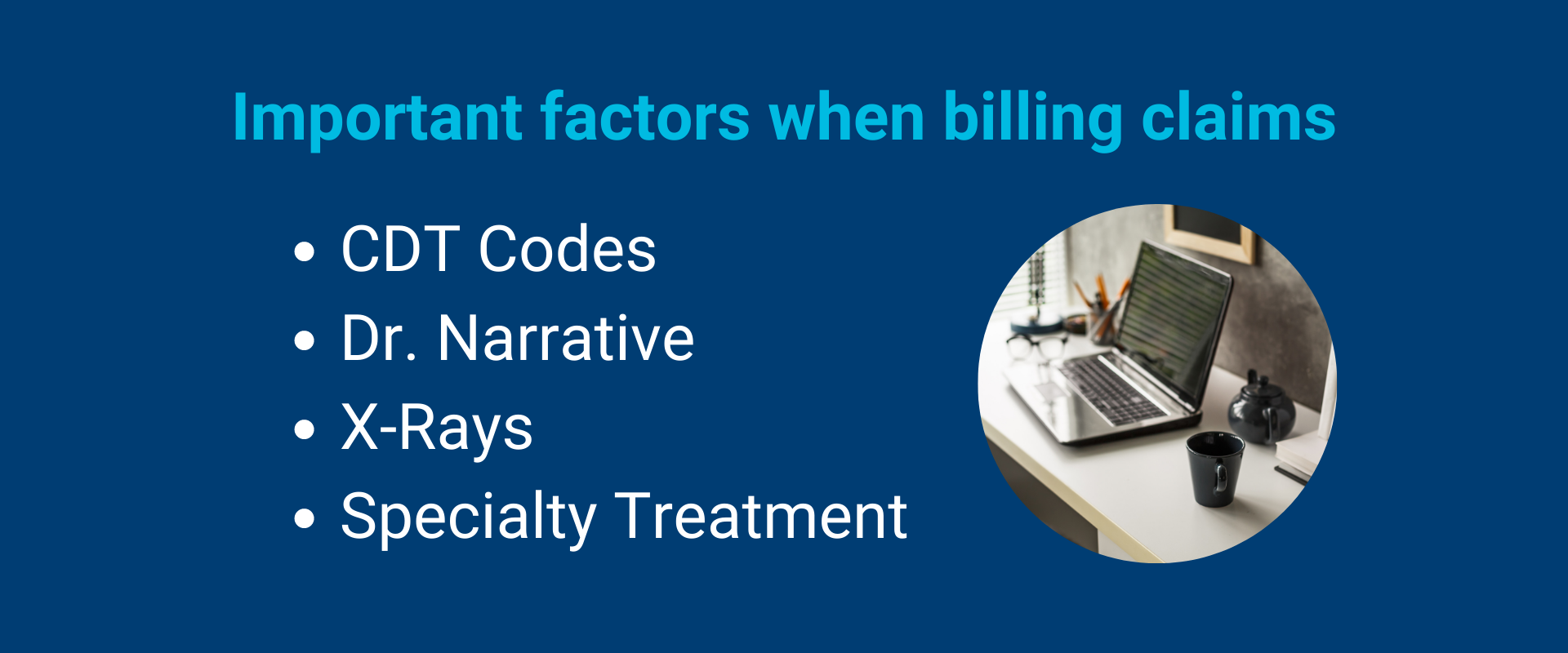When it comes to current dental terminology, things can get confusing. Whether it’s an acronym like DSO or a phrase like revenue cycle management you may find yourself thinking “whatever happened to simple terms like dental office and dental billing? Aren’t they the same thing?” The short answer is no. Just as a DSO is much more than a dental office, Revenue Cycle Management is so much more than billing.
What is Dental Billing?
In a nutshell, dental billing is the process of submitting a dental claim to an insurance company in order to be reimbursed for services rendered. It may sound simple but, as most office managers know, there are many more processes involved both before and after a claim is billed. These additional steps make up the components of Revenue Cycle Management.
Revenue Cycle Management
Revenue Cycle Management, or RCM for short, is a comprehensive, step-by-step process that encompasses the entire billing cycle. It begins when the patient schedules an appointment, continues through treatment and is not complete until all payments have been received and reconciled. Below are some examples of the various steps included in the RCM process.
Insurance Verification
Scheduling an appointment is only the first step in a payment process. Before the patient walks in the door, their insurance information should be obtained and verified. A dental insurance card provides only a brief glimpse into their coverage options, and in order to ensure the claim is paid there are several factors to consider including:
- Has the coverage termed? – How many times do we forget to update our various insurance cards in our wallets? It may seem simple to just check the card, but the plan effective dates should always be verified with the insurance company.
- Does the patient have other coverage? – It’s very common for patients to have multiple coverage plans. Whether they’re covered through their spouses or parents, it’s always necessary to verify how many plans they have and confirm coverage on both.
- Has the annual maximum been met? – Most dental plans have an annual maximum benefit amount and, depending on prior treatment, it may already have been met.
- Is it a covered benefit? – Every plan is different and not all treatment is covered on each, so each code billed should be confirmed as a covered benefit with the insurance company.
These are but a few of the scenarios one can encounter when verifying coverage prior to an appointment. To reduce the complexities associated with insurance verification, many offices find it helpful to outsource this task to a capable, remote team.

Billing the Claim
Once the insurance has been verified and the procedure has been completed, it’s time to bill the claim. Once again, a seemingly simple process can be impeded by a number of factors.
- CDT Codes – CDT codes are reviewed and updated annually and it’s essential to ensure the correct codes are billed.
- Dr. Narrative – If the procedure requires a doctor’s narrative it’s essential to obtain one that is clear, concise and thorough.
- X-Rays -As with doctor’s notes, if x-rays are required they need to be clear and readable.
- Specialty Treatment – When it comes to more complex treatment such as endodontic or periodontal procedures it’s essential that all required documentation (such as periodontal charts or pre-authorizations) are included.
It’s essential to thoroughly review what the insurance company requires prior to billing the claim. In the RCM process, this step is frequently performed incorrectly. But the fact of the matter is, your office can’t afford to make billing mistakes. Partnering with a remote dental billing team, solely dedicated to claim processing and follow up is the best way to ensure accurate, timely billing.
Follow Up
In a perfect world, once a claim is billed the only thing left to do is sit back and wait for the money to come in. Every once in a while it works just like that, but too often a bit of follow up is required due to varying circumstances such as:
- Coverage Question – There can be various factors that cause this. For example, another plan may be primary, they may not be a covered dependent, or the plan may have termed prior to treatment.
- Further Documentation Needed – The insurance company may request clearer x-rays or a more detailed doctor’s narrative in order to further review the claim.
- Denial – There are several reasons why a claim may be denied and depending on the circumstances, entering the appeals process may be necessary.
All of these factors can cause delays in payment being received and the claim getting closed.
Final Payment
Once payment is received, it may seem that the billing process has been completed. However, that is not always the case. Consider the following scenarios.
- Claim Underpayment – Portions of the claim may have been denied or the annual maximum may have been exceeded.
- Claim Overpaid – Based on the circumstances, a refund may be due to the insurance or patient.
- Patient Portion – If the patient is on a payment plan, further payments may be needed.
Until a zero balance is achieved, the claim cannot be closed.

Revenue Cycle Management is Not the Same as Dental Billing
All of these factors don’t fit into the definition of dental billing, but they are exactly what Revenue Cycle Management is all about. RCM tracks and completes the entire process of the claim from initial insurance verification to final payment posting. It is a detailed, organized process that ensures maximum reimbursement on claims is received.
Revenue Cycle Management can be a time consuming process that takes up too much valued time in a dental office. Consider outsourcing this process to experienced claims specialists. At eAssist, the Success Consultants who use our platform can assist you with every aspect of the Revenue Cycle Management process. Fill out the form below to learn more.








0 Comments